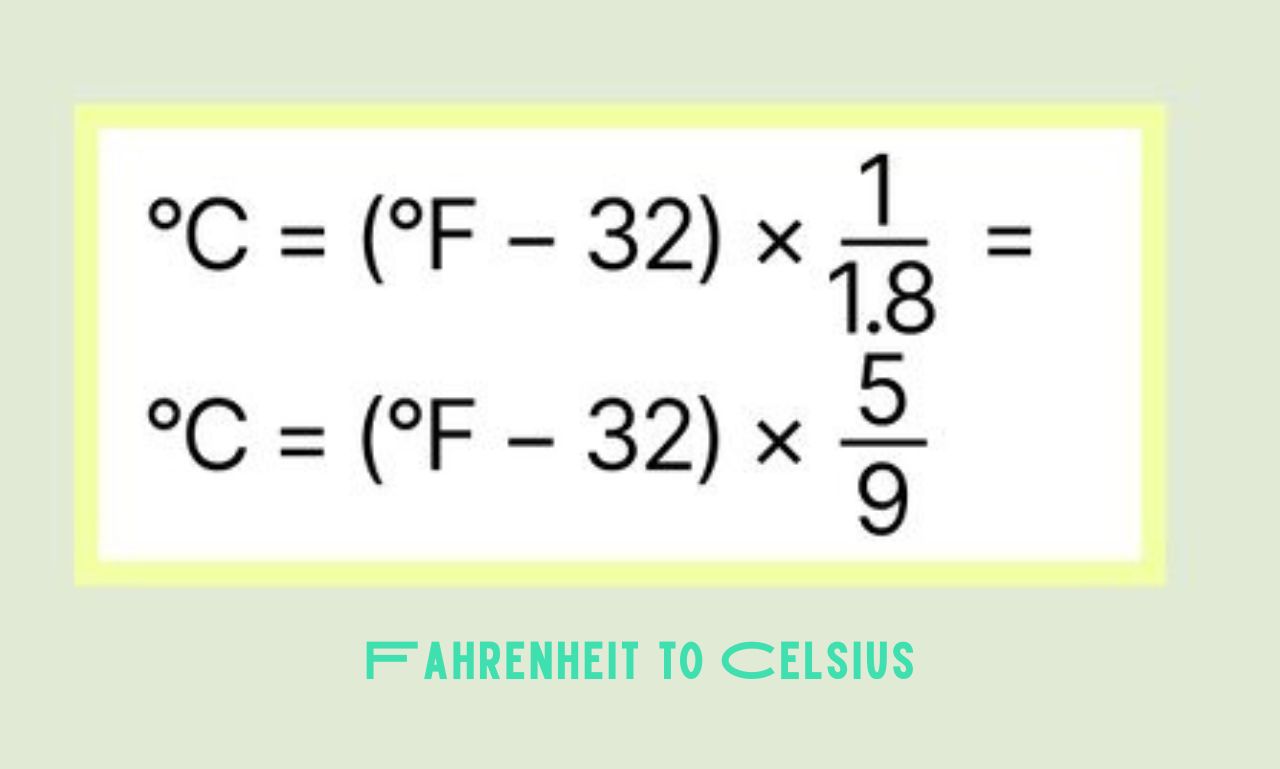Step into the world of temperature conversion as we unravel the mystery behind Fahrenheit to Celsius! Have you ever wondered how to accurately convert between these two commonly used measurement systems? Join us on a fascinating journey through the science and formulas that make it all possible. Temperature is more than just numbers – it’s a reflection of our environment, our comfort, and our understanding of the world around us. Let’s dive in and explore the captivating realm of Fahrenheit to Celsius conversions together!
What is Fahrenheit and Celsius?
Temperature measurement is a fundamental aspect of our daily lives, impacting everything from weather forecasts to cooking recipes. Two common systems used worldwide are Fahrenheit and Celsius.
Fahrenheit, developed by German physicist Daniel Gabriel Fahrenheit in the early 18th century, sets the freezing point of water at 32 degrees and the boiling point at 212 degrees under standard atmospheric pressure.
Celsius, also known as centigrade, was devised by Swedish astronomer Anders Celsius in the mid-18th century. In this system, water freezes at 0 degrees and boils at 100 degrees under normal atmospheric conditions.
While both scales are widely used globally for measuring temperature, there are differences in their ranges and reference points that make understanding how to convert between them valuable knowledge.
The Formula for Converting Fahrenheit to Celsius
Have you ever wondered about the magic behind converting temperatures from Fahrenheit to Celsius? Well, it’s not as complicated as it may seem. The formula for this conversion is a straightforward mathematical equation that you can easily execute.
To convert Fahrenheit to Celsius, you simply subtract 32 from the Fahrenheit temperature and then multiply the result by 5/9. This simple calculation allows you to accurately determine the equivalent Celsius temperature with precision.
Understanding this formula opens up a world of possibilities when it comes to interpreting temperatures in different units. Whether you’re trying to make sense of weather forecasts or cooking instructions, knowing how to convert between Fahrenheit and Celsius is a valuable skill.
So next time you come across a Fahrenheit temperature reading and need it in Celsius, remember this handy formula – subtract 32, multiply by 5/9, and voila! You’ve successfully converted the temperature unit.
Why Do We Need to Convert Temperatures?
Have you ever wondered why we need to convert temperatures from Fahrenheit to Celsius or vice versa? Well, the answer lies in the global nature of our world. Different countries and industries use different temperature scales, which can lead to confusion if not standardized.
By converting temperatures, we ensure clear communication across borders and disciplines. Whether it’s for international trade, scientific research, or travel purposes, having a universal understanding of temperature measurements is crucial.
Moreover, with advancements in technology and the ease of sharing information globally, accurate conversions are essential. Imagine ordering medication online from a country that uses a different scale – precise temperature conversion ensures you receive the right product.
In essence, converting temperatures isn’t just about numbers; it’s about facilitating efficient communication and ensuring accuracy in various aspects of our interconnected world.
Common Uses of Fahrenheit and Celsius
Both Fahrenheit and Celsius scales are widely used for measuring temperature across the globe. Fahrenheit is commonly used in the United States for weather reports, cooking recipes, and body temperatures. On the other hand, Celsius is more prevalent in scientific research, international communication, and everyday use in most countries.
In daily life, you might see Fahrenheit on your oven or thermostat settings if you’re based in the US. Meanwhile, when traveling internationally or reading scientific literature, you’re likely to encounter Celsius measurements. Understanding both systems can be beneficial depending on your location and field of work.
Whether you’re trying a new recipe that lists temperatures in Fahrenheit or discussing global warming trends using Celsius data points – knowing how to convert between these two temperature scales can be a handy skill to have!
Tips for Accurate Conversions
- When it comes to converting temperatures from Fahrenheit to Celsius, accuracy is key. Here are some tips to ensure you get the right conversion every time.
- Always double-check the formula you’re using. It’s easy to mix up formulas or make calculation errors, so take your time and avoid rushing through the process.
- Round numbers appropriately. While conversions may result in decimals, rounding them off can help simplify the final temperature for practical use.
- Be mindful of negative numbers when converting between Fahrenheit and Celsius. Remember that negative temperatures behave differently on each scale.
- Consider using online conversion tools or apps for quick and accurate results. These resources can save time and eliminate manual calculation errors.
Conclusion:
Understanding the science behind converting Fahrenheit to Celsius empowers us to navigate temperature measurements with ease. By grasping the formulas and reasons for conversion, we can seamlessly switch between these two common scales. Whether you’re preparing a recipe, checking the weather forecast, or working in scientific research, knowing how to convert temperatures accurately is a valuable skill. With practice and the tips provided, you can confidently handle conversions between Fahrenheit and Celsius like a pro. Embrace the knowledge of temperature measurement systems and elevate your proficiency in dealing with varying climates and environments.









